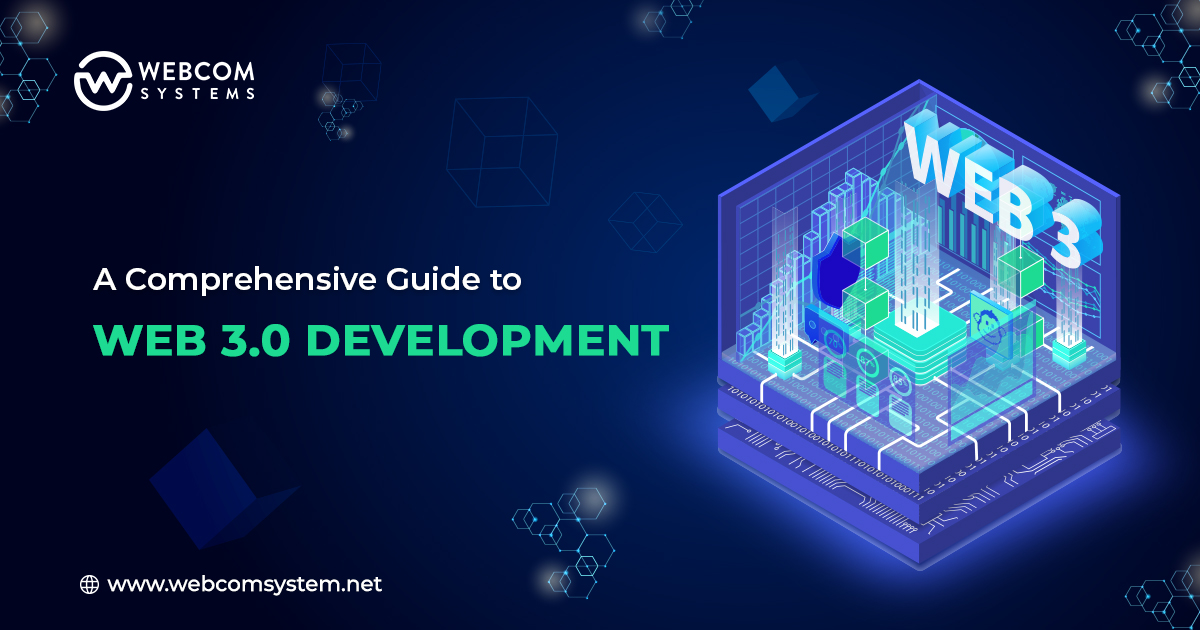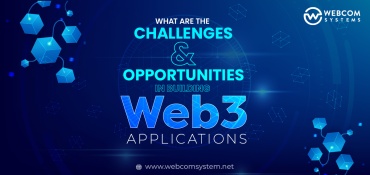Web 3.0, also known as decentralized web, has transformed the way we reticulate with the internet. Contrary to Web 2.0 which is regulated by centralized services and platforms, Web 3.0 is built on decentralized technologies and protocols that give greater control to the users over their data while enhancing security and enabling different new forms of digital interactions.
This guide will provide you with a comprehensive analysis of Web 3.0 Development that includes the core concept, technologies involved and some handy steps to get started with it.
Core Concepts Of Web 3.0 Development
- Decentralization: Decentralization is the heart of Web 3.0. Rather than storing the data on centralized servers, the Web 3.0 dApps harness blockchain technology to send data across different network nodes while enhancing transparency and security.
- Blockchain Technology: This distributed ledger records transactions across many devices in such a manner that the recorded transactions cannot be changed or hacked. It shores up most of the Web 3.0 apps while ensuring the integrity of data and authorizing the decentralized consensus.
- Smart Contracts: Basically, they are self-executing contracts with the conditions of the agreement written to the code directly. These contracts run on blockchain platforms such as Ethereum, allowing the dApps to accomplish the transactions with any mediators.
- Tokens & Cryptocurrencies: Cryptocurrencies such as Bitcoin & Ethereum, and various tokens developed on various blockchain platforms, are an indivisible part of Web 3.0. They not only facilitate the transactions within the decentralized applications, propel network participation, and can also represent various assets and rights.
- Decentralized Finance (DeFi): It is a financial app that is built on blockchain technology and operates without any conventional financial mediator. It is included with various lending platforms, decentralized exchanges and other insurance protocols.
- Interoperability: Web 3.0 plays up interoperability among various protocols and blockchain networks, allowing seamless data exchange among various platforms.
Technologies in Web 3.0 Development
1. Blockchain Platforms:
- Ethereum: This is one of the most popular platforms for developing decentralized applications & launching smart contracts while using the Solidity programming language.
- Polkadot: Tailored for interoperability, enabling various blockchain platforms to exchange messages and value in a reliable manner.
- Solana: It is widely known for its very high throughput and minimal transaction fees, making it the right fit for all scalable dApps.
2. Programming Languages:
- Solidity: Mainly utilized for writing self-executing contracts on Ethereum.
- Rust: This language is used for the development of platforms like Solana & Polkadot.
- JavaScript: Often used with libraries like Web3.js, interacts with blockchain networks in various web applications.
3. Various Development Tools:
- Truffle: This is a development space & asset pipeline for Ethereum.
- Hardhat: A development site for Ethereum that helps developers manage and automate obligations.
- Ganache: A personal blockchain for Ethereum development you can use to set up contracts, expand programs, and run checks.
4. Wallets:
- Meta Mask: A popular Ethereum wallet that also acts as a gateway to dApps.
- Trust Wallet: Supports more than one blockchain and is widely used in the DeFi.
5. Decentralized Storage:
- IPFS (InterPlanetary File System): A protocol and network designed to develop a content-addressable, peer-to-peer approach of storing and sharing hypermedia in a disbursed document machine.
- Arweave: A decentralized storage network that seeks to provide a platform for the indefinite garage of information.
Steps to Start Web 3.0 Development
1. Learn the Basics:
Start by understanding the essential principles of blockchain, smart contracts, and decentralized packages. TFind many free and paid resources online, including guides on platforms like Coursera, Udacity, and freeCodeCamp.
2. Choose a Blockchain Platform:
Depending on your venture requirements, choose a blockchain platform. Ethereum is a superb start line due to its enormous documentation and big developer community.
3. Set Up the Development Environment:
- Install the Node Package Manager.
- Install Truffle or HardHat for Ethereum development.
- Set up MetaMask for interacting with the Ethereum community.
4. Write and Deploy Smart Contracts:
- Start with easy contracts to get familiar with Solidity.
- Use Remix, an online IDE for Solidity, to jot down and test your contracts.
- Deploy your contracts to a check network like Ropsten or Kovan using Truffle or Hardhat.
5. Build the Frontend:
- Use libraries like Web3.Js or Ethers.Js to engage along with your clever contracts from internet software.
- Use front-end development frameworks such as React or Vue.Js.
6. Test and Debug:
- Write assessments for your clever contracts using gear like Mocha and Chai.
- Use Ganache to simulate a blockchain community and check your dApp regionally.
7. Deploy to the Mainnet:
Once your dApp is stable and functioning effectively, deploy it to the main Ethereum network or your chosen blockchain platform.
8. Stay Informed & Interact with the Community:
The Web 3.0 space is unexpectedly evolving. Stay up to date with brand-new developments, take part in community forums, and make contributions to open-supply projects.
Challenges in Web 3.0 Development
- Scalability: Many blockchain networks face scalability troubles, leading to gradual transaction instances and excessive fees for the duration of peak durations. Layer 2 protocols and sharding solutions advance to address these demanding situations.
- Security: Smart contracts, as soon as deployed, can’t be easily altered. This immutability calls for rigorous testing and auditing to save you vulnerabilities and exploits.
- User Experience: Interacting with dApps may be complex for non-technical customers. Improving consumer interfaces and simplifying the onboarding system are vital for broader adoption.
- Regulatory Uncertainty: The regulatory landscape for blockchain and cryptocurrencies continues to be evolving, with special jurisdictions enforcing varying rules and hints. Developers want to live informed about regulatory adjustments that might impact their tasks.
Wrapping It Up
Web 3.0 represents a paradigm shift in how we interact with the digital realm, supplying exceptional tiers of decentralization, security, and consumer empowerment. While the way to becoming a Web 3.0 development company entails navigating new technologies and ideas, the potential rewards in phrases of innovation and effect are significant. By considering the core principles, leveraging the right tools, and staying engaged with the network, you could contribute to the future generation of the internet and assist in the future of decentralized applications.
Looking for a top-tier Web 3.0 development company for your next venture? Webcom Systems has you fully covered. Our highly seasoned experts are competent in Blockchain Integration, Smart Contracts and Dapps. Hire us to leverage the power of the most advanced and innovative solutions that can help you drive your business to the next level.




